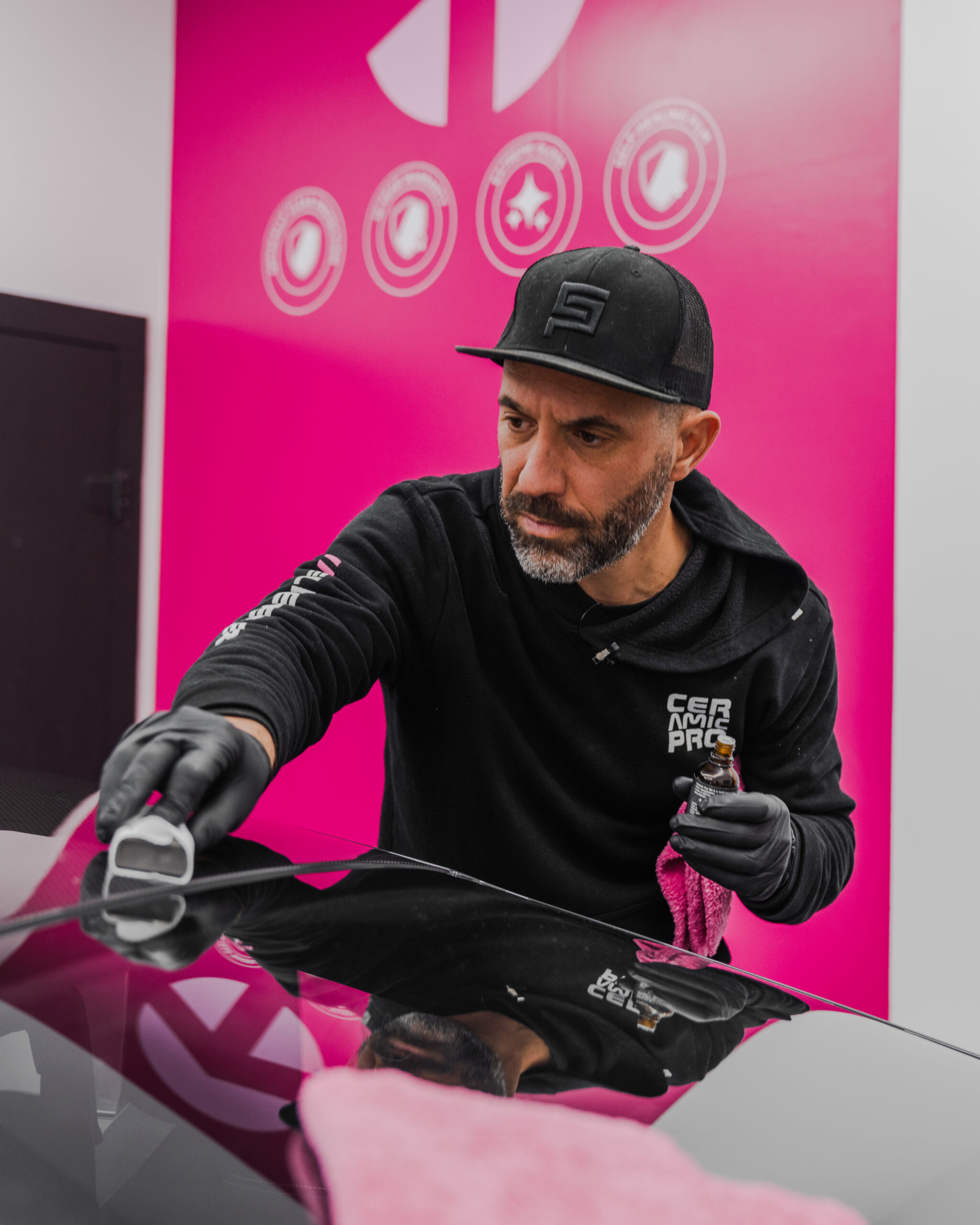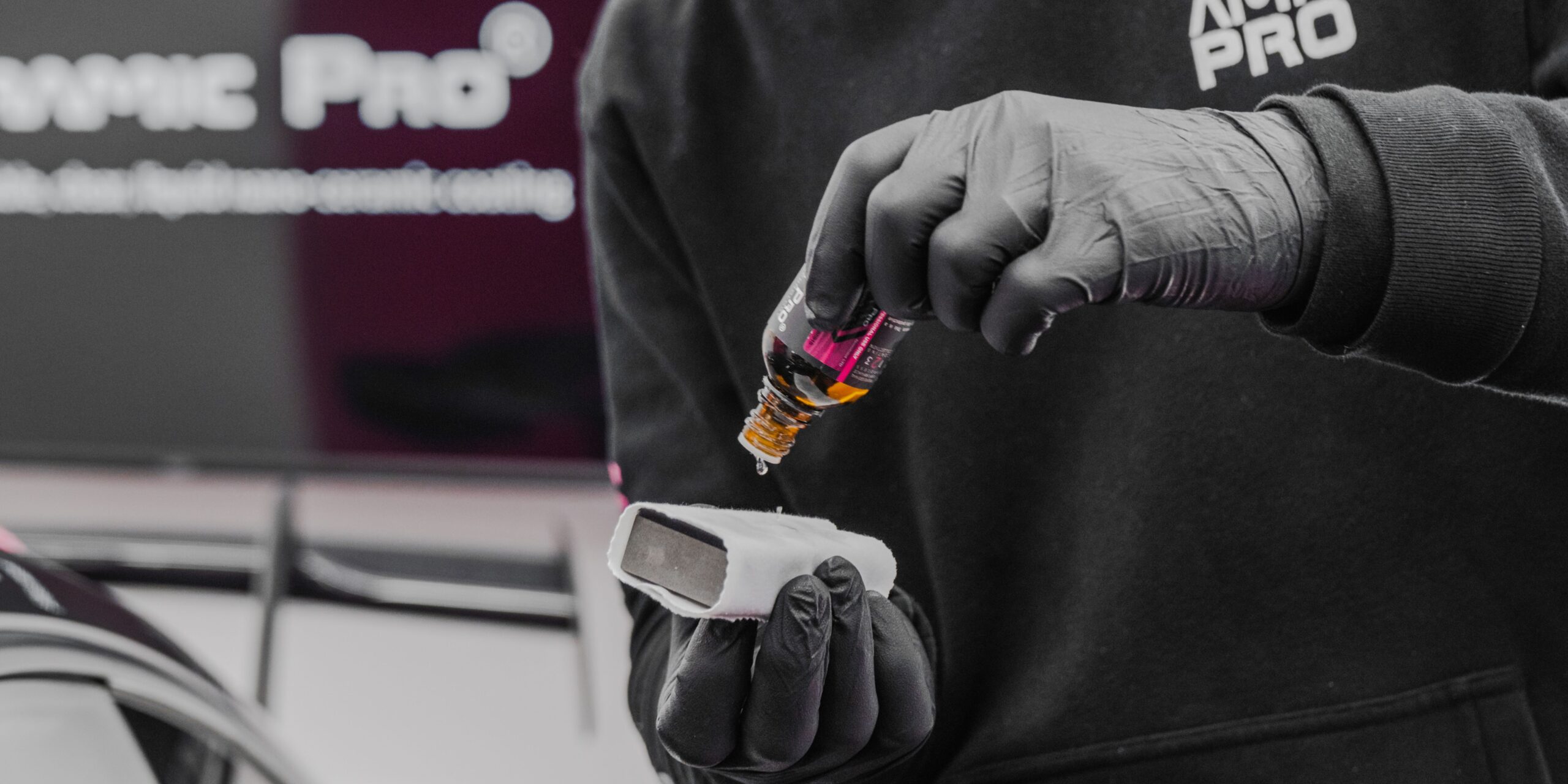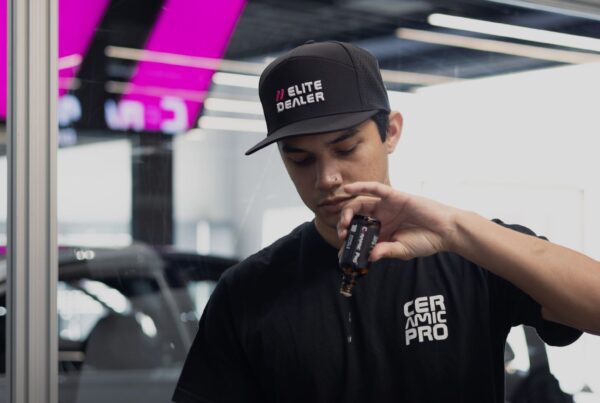The Longevity Battle – Why Ceramic Coating Outlasts Wax
At Ceramic Pro – we coined the phrase “Wax is Dead.” However, when it comes to protecting your vehicle’s paintwork, we understand there are various options available on the market. Two popular paint protection choices that often come up are ceramic coating and car wax.
While both provide a layer of protection for your car’s surface, ceramic coating has gained significant popularity due to its longevity and hydrophobic properties. But what makes ceramic coatings hold up longer than lab-created or traditional wax?
Well – the simple answer is – everything.
In the information below, we will delve into the factors that make ceramic coating last longer than wax, shedding light on why it has become the go-to choice for car owners, automotive enthusiasts, and professionals alike when protecting your car’s paint.
What Makes Ceramic Coatings Last Longer than Wax?
Besides their job of providing protection on top of a hard surface, there is virtually nothing similar between the chemical make-up of wax and ceramic coatings. And it’s this composition – along with the way they bond to the surface is what makes ceramic coatings the clear choice for automotive protection.
Difference #1: The Chemical Composition
Ceramic coating, also known as nano-ceramic coating, is primarily composed of nanoparticles of silicon dioxide (SiO2) or titanium dioxide (TiO2). These nanoparticles form a molecular bond with the vehicle’s paint, creating a durable protective layer. This strong molecular bond is what protects your paint from contaminants like bird droppings and creates the hydrophobic effect that ceramic coatings are famous for.
On the other hand, products like traditional carnauba wax are typically made from natural carnauba or synthetic polymers, which provide a temporary layer of protection. Wax usually tends to be an easier DIY solution because of this chemical composition. However, in different weather conditions, it will not stand the test of time. The chemical composition of ceramic coating gives it an edge in terms of durability and longevity.
Check Out Our Youtube Video: The Truth About Car Wax
Difference #2: Mechanical vs. Electrical Bond
If you remember your high school chemistry class, you’ll probably remember the lesson that discusses how materials bond together. Well – this is one of the major differences between ceramic coatings and wax.
Wax or paint sealants bond to a surface mechanically, meaning the wax simply sticks to the painted surface and sits on top of your car’s surface. Eventually, the bond weakens over time, and the wax or sealant fades away. This means that in order to maintain any level of protection, you will have to go through the time-consuming process of car detailing and reapplication.
A nanoceramic coating, on the other hand, electrically bonds to the automotive paint. Meaning the two individual components become one. Instead of simply sitting on top of the clear coated surface or other substrates, the nanotechnology infused in a ceramic coating will penetrate the microscopic pores, secure them, and then harden on the flat, top surface. This creates a glass-like shield over your paint that repels water and other contaminants.

Difference #3: Hardness and Resistance
Ceramic coatings are known for their exceptional hardness. Once applied, they create a semi-permanent bond with the paintwork or clear coat, resulting in a protective layer that can resist minor scratches, swirl marks, and abrasions. In contrast, wax is relatively softer and prone to wear off over time.
Even though wax provides initial protection, it does not develop a chemical bond with your paint surface, so it will gradually break down due to exposure to environmental elements, repeated washing, and regular wear and tear.
Difference #4: Thermal Resistance
One of the significant advantages of ceramic coatings is their ability to withstand high temperatures. When exposed to extreme heat, such as during summer months or intense sunlight, ceramic coatings remain stable and do not degrade easily.
This thermal resistance allows the coating to provide long-lasting protection, preserving the paint’s shine and color vibrancy.
On the other hand, wax is more susceptible to heat and may melt or degrade under extreme conditions, thereby reducing its protective capabilities. This makes wax obsolete during the summer months.
COATING
Properties
- SIO2 or TIO2 based
- Molecular bond with paint or clearcoat
- Creates glass-like shield
- Resists minor scratches, swirl marks, and abrasions
- Withstand high temperatures
WAX
Properties
- Natural carnauba or synthetic polymer-based
- Mechanical bond to paint
- Sits on top of the paint
- Can melt or degrade under extreme heat
- Soft and prone to wear off over time
Wrapping It Up
Once properly applied and cured, ceramic coatings provide an enduring shield against UV rays, oxidation, fading, and environmental contaminants. This longevity reduces the need for frequent reapplications, saving you both time and money.
Conversely, wax requires regular reapplication to maintain its protective properties and shine, which can be highly time-consuming. The frequency of waxing can vary depending on environmental factors, driving conditions, and maintenance routines.
If you’re truly looking to protect your paint job with a long-lasting, and Carfax documented warranty, prepared and installed by certified professionals, Ceramic Pro offers the best value by far. To learn how affordable Ceramic Pro coatings can be, click the button below for a free estimate.





